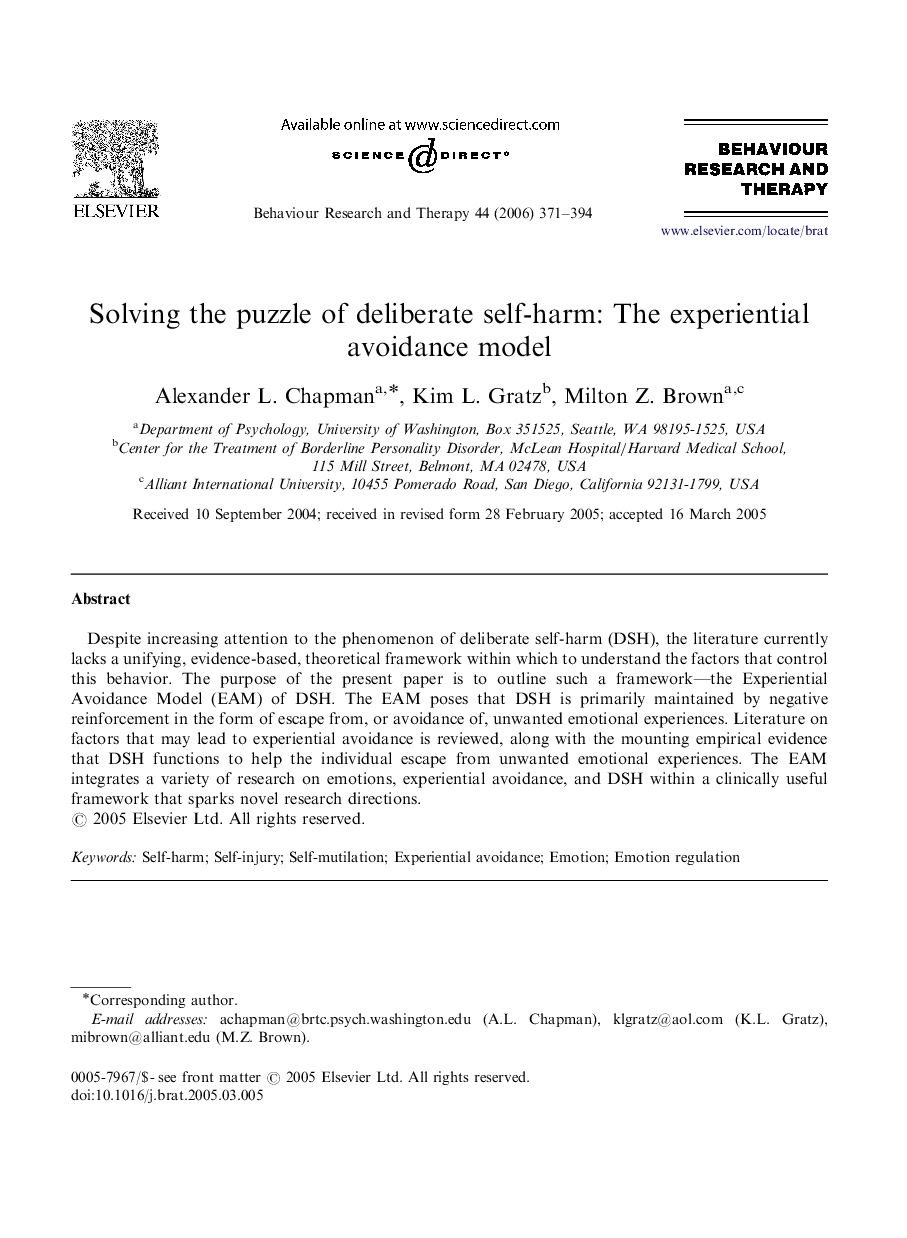| Article ID | Journal | Published Year | Pages | File Type |
|---|---|---|---|---|
| 902612 | Behaviour Research and Therapy | 2006 | 24 Pages |
Despite increasing attention to the phenomenon of deliberate self-harm (DSH), the literature currently lacks a unifying, evidence-based, theoretical framework within which to understand the factors that control this behavior. The purpose of the present paper is to outline such a framework—the Experiential Avoidance Model (EAM) of DSH. The EAM poses that DSH is primarily maintained by negative reinforcement in the form of escape from, or avoidance of, unwanted emotional experiences. Literature on factors that may lead to experiential avoidance is reviewed, along with the mounting empirical evidence that DSH functions to help the individual escape from unwanted emotional experiences. The EAM integrates a variety of research on emotions, experiential avoidance, and DSH within a clinically useful framework that sparks novel research directions.
